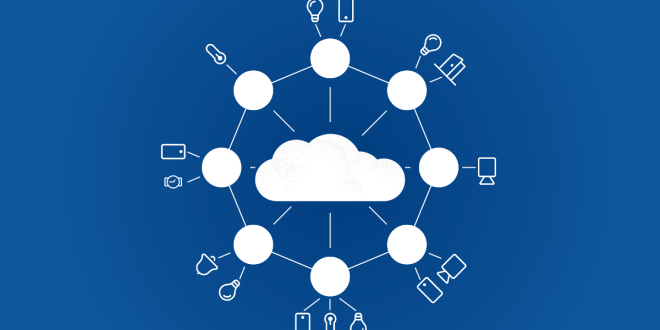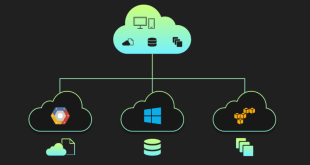In today’s rapidly evolving digital landscape, cloud computing has become the backbone of numerous industries, providing scalable and flexible solutions for data storage and processing. However, as cloud services grow in popularity, challenges like latency, bandwidth limitations, and data security have emerged. Enter edge computing – a revolutionary paradigm that aims to transform the way we approach cloud infrastructure. In this blog, we explore the fascinating world of edge computing, its role in powering a decentralized cloud infrastructure ecosystem, and how it addresses the limitations of traditional cloud services.
Understanding Cloud Computing and Its Infrastructure
Cloud Computing: A Foundation of Modern Technology
Cloud computing refers to the delivery of computing services over the internet, including storage, databases, networking, software, and more. Its scalable and on-demand nature has allowed businesses to focus on core competencies while leaving the complexity of infrastructure management to cloud service providers.
The Infrastructure of Cloud Computing: Centralization Woes
Traditional cloud infrastructure relies on centralized data centers, often located far away from end-users. While this model has proven effective for many applications, it faces challenges in scenarios where real-time data processing and ultra-low latency are crucial. Additionally, centralized data centers consume vast amounts of energy and can be susceptible to single points of failure.
Introducing Edge Computing: A Game-Changer in Cloud Infrastructure
What is Edge Computing?
Edge computing is a distributed computing architecture that brings computation and data storage closer to the location where it is needed, reducing the distance data must travel and resulting in lower latency and faster response times.
The Edge Computing Ecosystem: A Mesh of Devices
At the core of edge computing lies a vast ecosystem of devices, including edge servers, sensors, gateways, and IoT devices. These interconnected devices work seamlessly to process and analyze data at the edge of the network.
Advantages of Edge Computing
- Reduced Latency: Edge computing significantly reduces the time taken for data to travel from source to destination, enabling real-time processing and faster response times.
- Bandwidth Optimization: By processing data locally, edge computing minimizes the need for excessive data transmission to centralized data centers, leading to optimized bandwidth usage.
- Enhanced Data Security: With data processed locally at the edge, sensitive information is less exposed to potential security breaches that may occur during data transmission.
- Scalability: Edge computing enables scalable solutions as the addition of new edge nodes can easily expand the computing capacity of the network.
Edge Computing in Action: Real-World Use Cases
Smart Cities
Edge computing plays a pivotal role in making cities smarter and more efficient. By deploying edge devices and sensors across urban areas, city authorities can gather real-time data on traffic patterns, air quality, and waste management. This data empowers them to make data-driven decisions and optimize city services for residents.
Industrial IoT
In industries such as manufacturing and logistics, edge computing enables real-time monitoring and analysis of machines and processes. This helps prevent downtime, optimize production, and improve overall operational efficiency.
Autonomous Vehicles
Edge computing is a critical component in the development of autonomous vehicles. By processing data from multiple sensors in real-time, edge devices can assist in making split-second decisions, ensuring safer and more reliable autonomous driving.
Commonly Asked Questions
Q1: How does edge computing differ from cloud computing?
A1: While cloud computing relies on centralized data centers, edge computing brings computation and data storage closer to the source of data, reducing latency and enabling real-time processing.
Q2: Is edge computing more secure than traditional cloud services?
A2: Yes, edge computing enhances data security as sensitive information is processed and stored locally, reducing exposure to potential security breaches during data transmission.
Q3: Can edge computing handle large-scale data processing?
A3: Absolutely! Edge computing is highly scalable, and the addition of new edge nodes can easily expand the computing capacity of the network.
Q4: What industries can benefit from edge computing?
A4: Edge computing has applications across various industries, including smart cities, industrial IoT, healthcare, and autonomous vehicles.
Q5: How does edge computing contribute to the development of the Internet of Things (IoT)?
A5: Edge computing plays a crucial role in IoT by providing real-time data processing and analysis, which is essential for making immediate decisions based on data gathered from IoT devices.
Final Words
Edge computing is revolutionizing the cloud infrastructure landscape, addressing the limitations of traditional cloud services, and enabling a new era of real-time data processing and low-latency applications. From smart cities to autonomous vehicles, edge computing is shaping a decentralized cloud ecosystem that promises enhanced efficiency, security, and scalability. Embracing edge computing will undoubtedly unlock a world of possibilities for industries and pave the way for a more connected and efficient future.
 webfily
webfily



